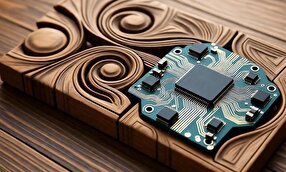New AI Spots Hidden Heart Attack Risk at Click of A Button

Researchers from Edith Cowan University (ECU), in collaboration with the University of Manitoba, have developed an automated machine learning program capable of identifying potential cardiovascular events and risks of falls and fractures using bone density scans obtained during routine clinical assessments, the Journal of Bone and Mineral Research reported.
The algorithm was applied to vertebral fracture assessment (VFA) images collected from older women undergoing routine bone density testing, often part of osteoporosis management. It effectively evaluated the presence and severity of abdominal aortic calcification (AAC), a key indicator of cardiovascular risk.
This tool dramatically reduces the time required to assess AAC. While a trained specialist typically needs five to six minutes to score a single image, the algorithm can analyze thousands of images and generate AAC scores in under one minute.
During her research, ECU research fellow Dr. Cassandra Smith found that 58% of older individuals screened during routine bone density testing presented with moderate to high levels of AAC, with one in four walking through the door unaware that they had high AAC, placing them at the highest risk of heart attack and stroke.
“Women are recognized as being under-screened and under-treated for cardiovascular disease. This study shows that we can use widely available, low radiation bone density machines to identify women at high risk of cardiovascular disease, which would allow them to seek treatment.
“People who have AAC don’t present any symptoms, and without doing specific screening for AAC, this prognosis would often go unnoticed. By applying this algorithm during bone density scans, women have a much better chance of a diagnosis,” Dr. Smith said.
Using the same algorithm, ECU senior research fellow Dr. Marc Sim found that these patients with moderate to high AAC scores also had a greater chance of fall-associated hospitalization and fractures, compared with those with low AAC scores.
“The higher the calcification in your arteries, the higher the risk of falls and fractures,” Dr. Sim said.
“When we look at traditional falls and fracture risk factors, things like have you fallen in the past year and bone mineral density are generally very good indicators of how likely someone is to fall and fracture. Some medications are also associated with higher fall risks. Rarely do we consider vascular health when considering falls and fractures.
“Our analysis uncovered that AAC was a very strong contributor to falls risks and was actually more significant than other factors that are clinically identified as falls risk factors.”
Dr. Sim said that the new machine algorithm, when applied to bone density scans, could give clinicians more information around the vascular health of patients, which is an under-recognized risk factor for falls and fractures.
4155/v





















